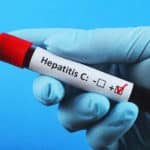Experimental Stem Cell Therapy for Cirrhosis
Now, scientists are utilizing stem cells to repair damaged livers. This appears to be regardless of the cause of cirrhosis (alcoholic induced hepatitis or viral hepatitis).
These are the kinds of experiments that offer real hope to people with serious liver concerns.
Reading between the lines in the report from the medical journal “Hepatology” gives us some interesting data. One fact that stands out is that 25 million Americans (one in ten) have liver related diseases—making this the seventh leading cause of death.
Another fact stated is that 10,000 Hepatitis C patients die due to cirrhosis each year, and another 5,000 from chronic Hepatitis B.
Clearly, it is important to protect and support your liver. While a small minority of Hepatitis C patients will progress to end stage liver disease (just 20 to 30% according to the Centers for Disease Control), this is a very serious life-threatening condition for those most negatively affected.
A pioneering stem cell therapy designed to heal otherwise irreversible liver damage has started trials in Japan. A similar trial on people with cirrhosis is about to start in London, UK.
The need for new treatments is urgent. Cirrhosis kills 27,000 Americans each year, and one in 10 of the population – 25 million Americans – have liver-related diseases making it the seventh most common cause of death. For now, the only real hope for patients who suffer severe liver damage through heavy drinking or viral infections is a liver transplant from a matched donor. But waiting lists for livers are growing.
In the U.S., 18,500 patients await transplants. In the UK, the waiting list has more than doubled between 1994 and 2003, from 101 to 239, although around 600 people a year receive a transplant.
Antiviral drugs tackle viral-related cirrhosis if given in time, but sometimes the damage is too advanced, resulting in up to 10,000 cirrhosis deaths from hepatitis C in the US, and 5000 deaths from hepatitis B.
Younger drinkers
The situation is just as dire in the UK, where cirrhosis cases are increasing, according to Alison Rogers, chief executive of the British Liver Trust. Alcohol-related cirrhosis accounts for around half of cases.
“People are drinking more, and younger than they used to, and women are drinking more,” says Rogers. Extrapolating from a recent, unpublished study of hepatitis C prevalence in Southampton, Rogers says that as many as 750,000 drug users in the UK could be harbouring the virus.
The pioneering Japanese trial builds on successful experiments with mice. “Our results showed that even if chronic liver injury exists, transplantation of bone marrow stem cells can reverse this,” says Isao Sakaida of Yamaguchi University in western Japan, head of the team that developed the new procedure. He says it is too soon to know if people in the trial are responding to the treatment.
For their mouse experiments, Sakaida and his team damaged the livers of the animals by injecting carbon tetrachloride, to produce a condition called liver fibrosis in which interconnected strands and patches of damaged and dead tissue criss-cross the organ. Fibrosis eventually develops into cirrhosis when nodules of cells form at the junctions of the fibrous strands.
After four weeks, Sakaida took bone marrow cells from donor mice that had a jellyfish gene inserted to make their cells glow green. He then injected the cells into the tail veins of half the mice with damaged livers. Sakaida was able to track where the glowing cells ended up in the liver-damaged mice. In the fifth and eighth weeks of the experiment he found the cells had migrated en masse to the liver.
“Ready to go”
Following the infusion of bone marrow cells, the proportion of fibrous tissue in the liver shrank from an average of nearly 5.4% in the fifth week to less than 4.2% three weeks later. Mice in a control group given only saline solution showed no such change.
The team were able to show that bone marrow cells reaching the liver changed into liver cells and made large amounts of an enzyme called matrix-metalloproteinase-9 (MMP-9), which may play a role in dissolving fibrotic tissue.
For the trials on people, Sakaida’s team favours injecting bone marrow stem cells extracted from the patients themselves to avoid problems of rejection of donor cells. At Hammersmith Hospital in London, a team headed by Nagy Habib claims to be “ready to go” with a similar trial. The London team plans to concentrate stem cells obtained from the patients’ bone marrow and inject them into the liver through the hepatic portal vein.
Both techniques risk quite serious side effects. Some bone marrow cells, for example, might form scar tissue, making the cirrhosis worse. But Habib says the Japanese work in mice indicates that this is unlikely.
Further question marks arise from an almost identical study published last year in Proceedings of the National Academy of Sciences (vol 100, p 11850) by Inder Verma and Yoshiyuki Kanazawa of the Salk Institute for Biological Studies in La Jolla, California, US. They found hardly any evidence of healed liver tissue after they infused bone marrow cells, and concluded that “bone-marrow derived cells cannot generally lead to a cure for liver damage”.
Journal reference: Hepatology (vol 40, p 1304)








3 Comments
I’m a 50 year old male with hepc and advanced cirrhosis(child class) end stage. I’m on waiting list for stem cell research in England. Hopefuly this can reverse the damage. I dread the thought of a liver transplant. But I’m running out of time! Could you email this page on stem cell’s?
Great info!
Thank you,
Michael
How do I get in a stem cell study for my stage 4, grade 4 cirrhosis due to hep C? I would travel and stay anywhere to do it. Help!
Chinoiserie
How can I become test patient,please?